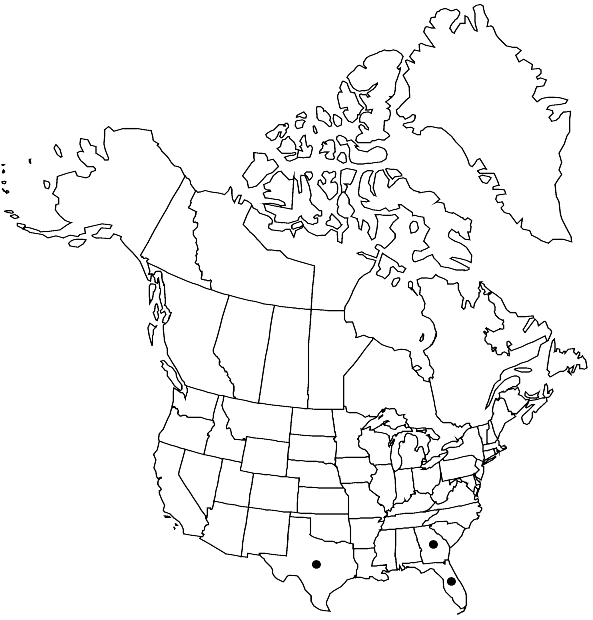Difference between revisions of "Archidium hallii"
Bull. Torrey Bot. Club 6: 145. 1877,.
FNA>Volume Importer |
FNA>Volume Importer |
||
| Line 22: | Line 22: | ||
|elevation=0-200 m | |elevation=0-200 m | ||
|distribution=Fla.;Ga.;Tex.;Mexico;South America. | |distribution=Fla.;Ga.;Tex.;Mexico;South America. | ||
| − | |discussion=<p>Archidium hallii can be distinguished from similar-looking forms of A. tenerrimum by autoicous sexuality and leafy bracts enclosing the antheridia.</p> | + | |discussion=<p><i>Archidium hallii</i> can be distinguished from similar-looking forms of <i>A. tenerrimum</i> by autoicous sexuality and leafy bracts enclosing the antheridia.</p> |
|tables= | |tables= | ||
|references= | |references= | ||
| Line 46: | Line 46: | ||
|publication year= | |publication year= | ||
|special status= | |special status= | ||
| − | |source xml=https://jpend@bitbucket.org/aafc-mbb/fna-data-curation.git/src/ | + | |source xml=https://jpend@bitbucket.org/aafc-mbb/fna-data-curation.git/src/8f726806613d60c220dc4493de13607dd3150896/coarse_grained_fna_xml/V27/V27_433.xml |
|genus=Archidium | |genus=Archidium | ||
|species=Archidium hallii | |species=Archidium hallii | ||
Revision as of 17:55, 18 September 2019
Plants 3–10 mm, perennial, in dense short turfs, pale-green to yellow-green. Stems branched by several innovations from axils of stem leaves or outer perichaetial leaves, often becoming prostrate with age. Stem leaves erect-spreading, lanceolate to ovate-lanceolate, acuminate, 0.7–1.5 mm, becoming reduced proximally; costa percurrent to slightly excurrent; laminal margins smooth, weakly recurved; median and distal laminal cells rhomboidal to hexagonal, 3–4:1, 35–70 × 12–18 µm, proximal cells rectangular, 2–4:1, 40–70 × 18–24 µm, short-rectangular to quadrate in alar region in 2–6 rows extending 7–15 cells along proximal laminal margin; leaves of innovations similar to distal stem leaves except being smaller, gradually reduced proximally. Perichaetial leaves larger, 1.5–3 mm, elongate-triangular, lanceolate or ovate-lanceolate, gradually acuminate; costa percurrent to short-excurrent; laminal margins smooth, weakly recurved distally; median and distal laminal cells uniformly rhomboid to hexagonal, 3–7:1, 35–130 × 15–28 µm, proximal cells rectangular, 4–6:1, 70–140 × 15–28 µm, sometimes hyaline in alar region but cells not strongly differentiated. Specialized asexual reproduction absent. Sexual condition autoicous, antheridia terminating axillary leaf buds. Capsule terminal, 450-700 µm. Spores typically 20(8–36) per capsule, triangular to rounded-polyhedral, 140–250 µm, smooth to granulose, yellow.
Phenology: Capsules mature early spring (Mar) or rarely late fall (Nov).
Habitat: Uncommon to rare on moist open sandy or loamy soil, along roadsides and in grassy often disturbed areas
Elevation: 0-200 m
Distribution

Fla., Ga., Tex., Mexico, South America.
Discussion
Archidium hallii can be distinguished from similar-looking forms of A. tenerrimum by autoicous sexuality and leafy bracts enclosing the antheridia.
Selected References
None.